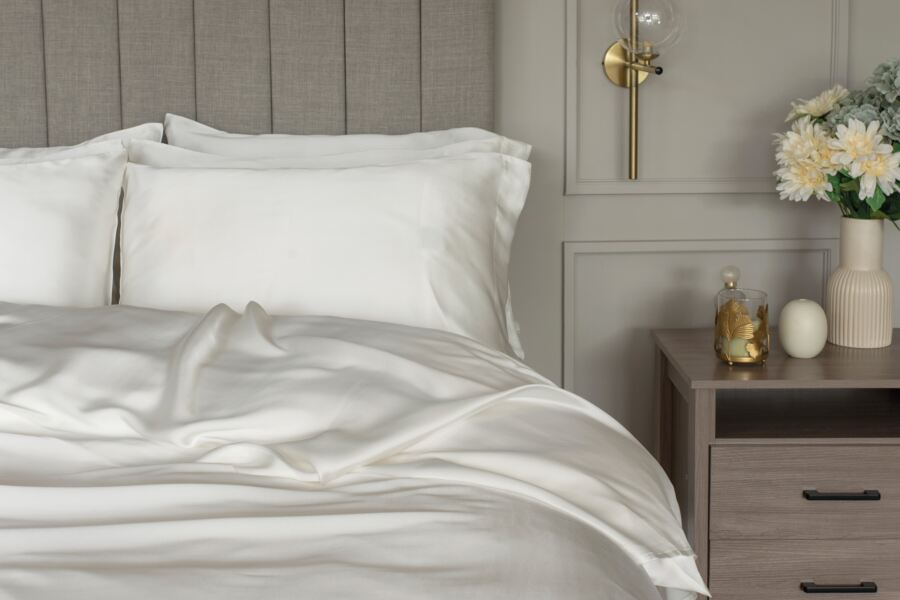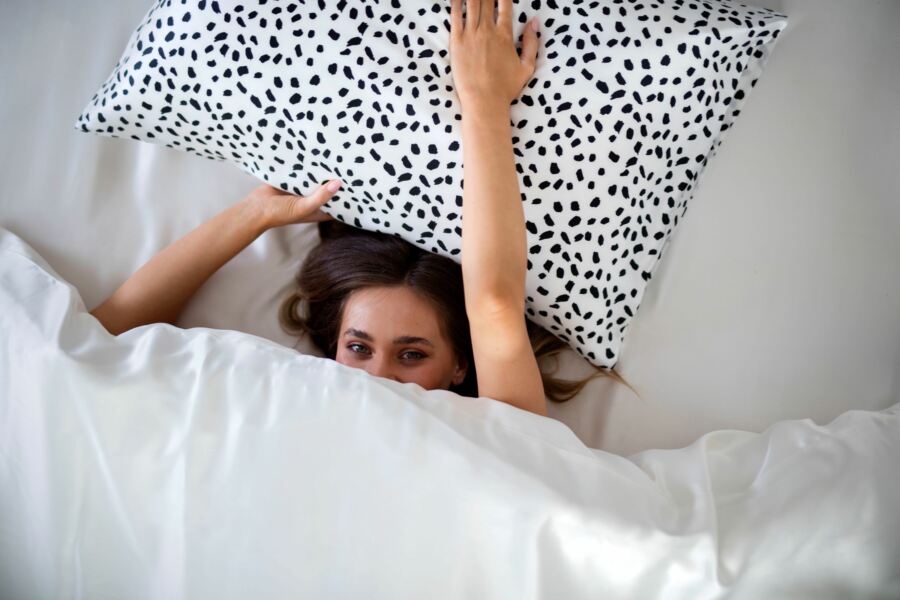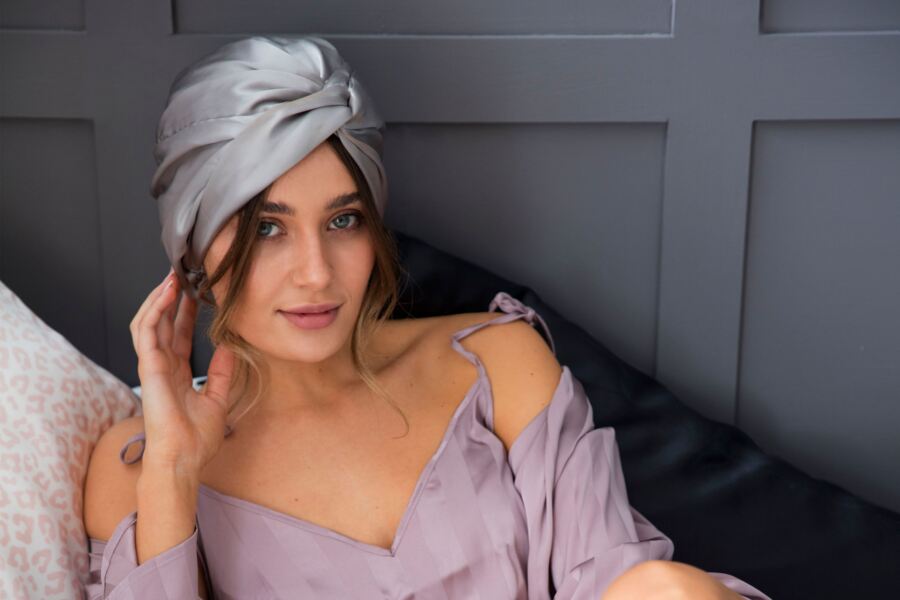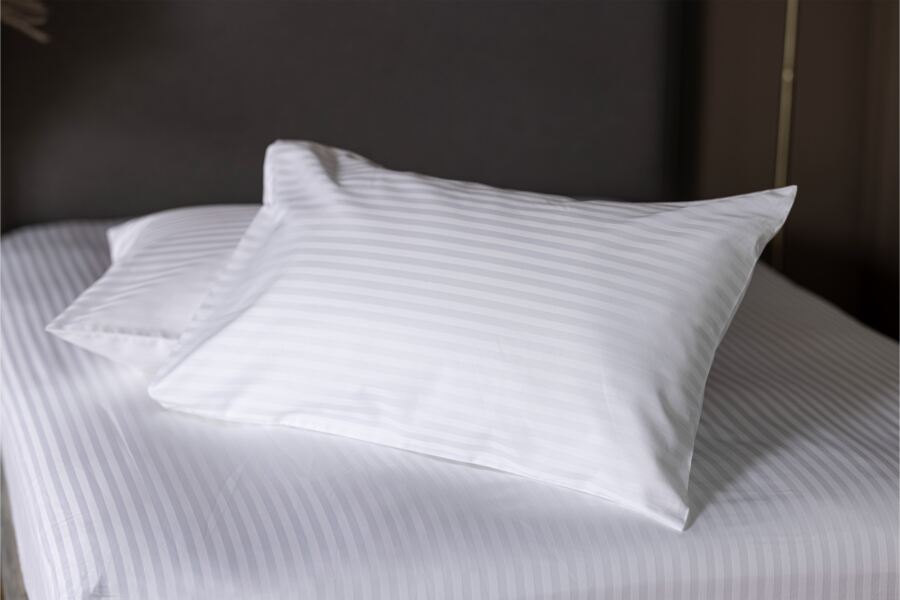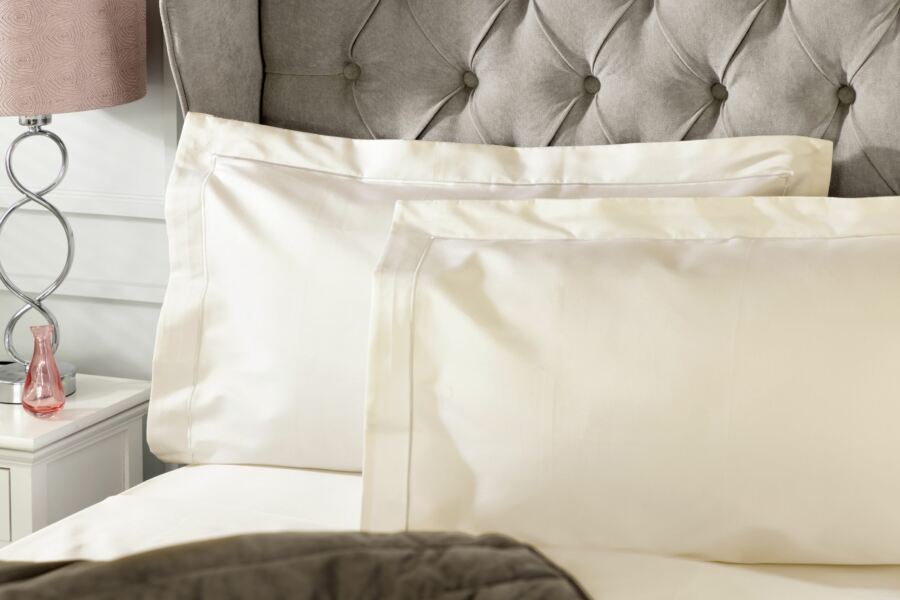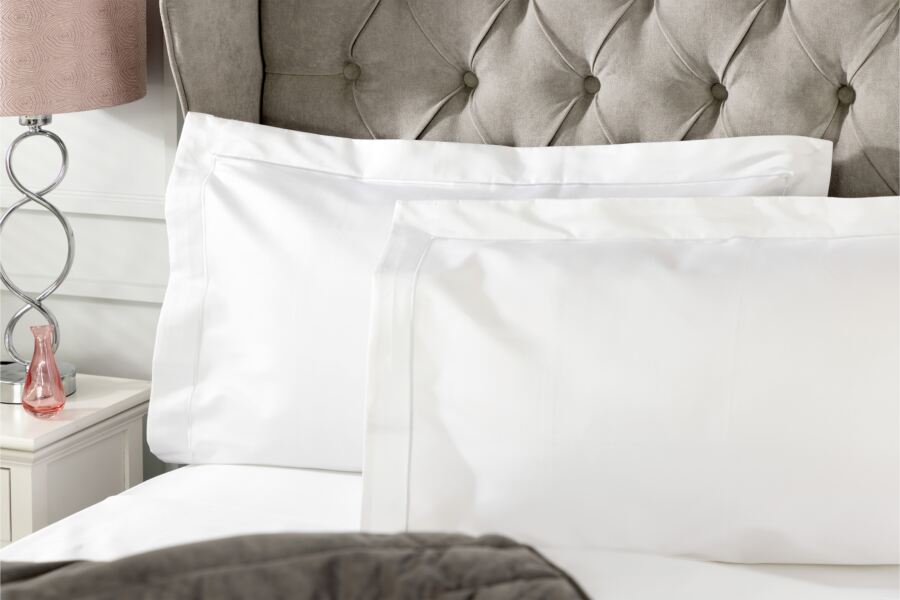Table of Contents
- How Is Your Pillowcase Damaging Your Hair?
- Which Pillowcases Are Best For Your Hair?
- Which Materials Are Damaging Your Hair?
- What Should You Consider When Choosing Pillowcases?
- Other Tips For Better Hair While You Sleep
- FAQs
- Final Thoughts
Do you spend your mornings rushing around, trying to tame your dry, knotted and frizzy hair? Well, it might be time to say goodbye to your standard cotton pillowcases and invest in ones that will be a morning time-saver. Most importantly, it will make you feel like your "beauty sleep" did the job it promised.
The ideal pillowcases to maintain luscious, healthy hair are made from silk, satin, and sateen. This is due to their soft, frictionless textures and hair-nourishing properties.
In this article, we'll explain the science behind why these pillowcase materials are the most beneficial for hair health, which materials damage your hair the most, and what to consider when choosing the right pillowcase. We'll also look at some expert tips and tricks to keep your hair healthy.
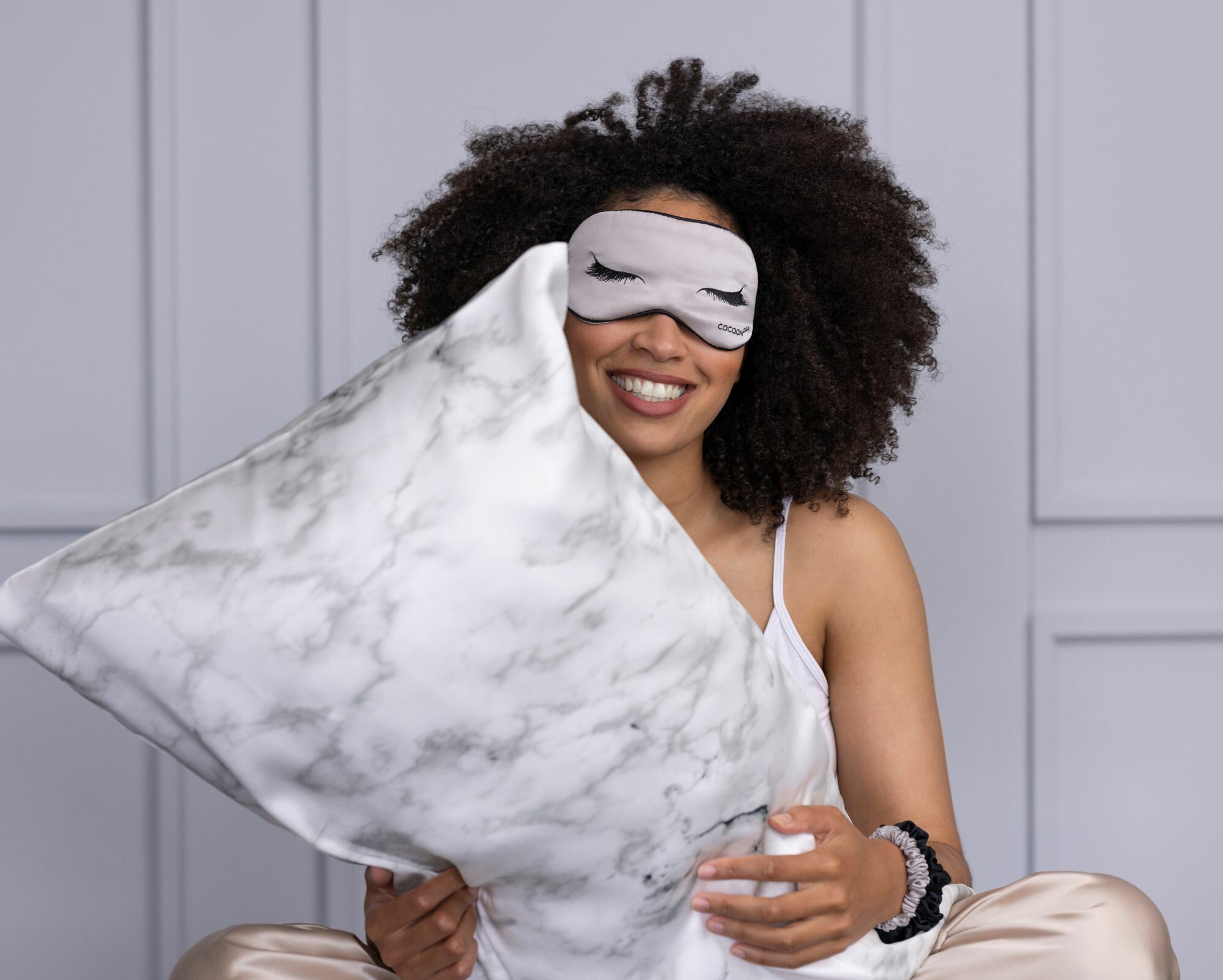
How Is Your Pillowcase Damaging Your Hair?
The short answer to this question is friction! When you sleep, you roll around all night, tossing and turning on your pillow. A pillowcase made from rough material means your hair will rub against a harsh surface all night, leading to knotting, frizz, split ends and dryness.
Certain types of pillowcases cause dryness because the material is too absorbent. This essentially means that your pillow is - quite literally - sucking the natural moisture and oils out of your hair.
The good news is that something as simple as changing your pillowcase to a smoother fabric will keep your hair in optimal health.
Which Pillowcases Are Best For Your Hair?
With all the options available, it's hard to know which pillowcase is better for your hair than others. That's why we have put together the materials that'll work wonders for your hair while you sleep. Silk, sateen and satin are all ideal and have many benefits.
Silk Pillowcases
Silk pillowcases are the ideal material for sleeping on, especially for hair. Silk is a natural fibre, luxuriously soft and breathable. Its smooth surface reduces friction between your hair and pillow, which avoids knotting, frizz, and dry, split ends (especially when you have a silk pillowcase with a momme count of 16 or above).
Silk is also naturally less absorbent than other bedding materials, like linen or cotton, which means that the natural oils in your hair will be retained. This is beneficial, as hydrated hair is less prone to breakage than dry hair.
In addition, silk pillowcases contain proteins and amino acids that actively nourish your skin and hair while you sleep. So, not only do they cause less harm, but they also promote hair and scalp health too!
Silk pillowcases are also naturally hypoallergenic, which is excellent for allergy sufferers with sensitive scalps.
The best silk pillowcases are made from 100% natural fibres. Our tried and tested recommendations include a 100% mulberry silk or Cocoonzzz luxury silk pillowcase.
Satin Pillowcases
A close second and an excellent alternative to silk are satin pillowcases.
Satin is a material characterised by its weave pattern. It is usually made of synthetic fibres, like polyester and nylon, that result in a similar look and feel as real silk.
Satin is also non-absorbent, which means that your hair will be able to retain all of its moisture instead of seeping into the pillowcase.
It is a lot like silk in ways of friction and absorbency. Much like silk, a satin pillowcase provides an incredibly smooth, soft surface that limits hair tugging and friction. This decreases the chances of your hair getting tangled and broken during the night.
Sateen Pillowcases
While a cotton pillowcase is not ideal for promoting hair health, sateen can be an excellent and more affordable option. Although sateen is technically 100% cotton, its tight weave and high thread count mimic the soft feel of a real silk or satin pillowcase and provide some of the same benefits.
Sateen is ultra-soft, meaning your hair rubs against a smooth surface when you sleep, helping counteract friction. This will ensure you wake up with less frizz and maintain silkier, smoother hair.
Because sateen is less absorbent than regular cotton thanks to its tight weave, it helps your hair and scalp retain their natural moisture and oils. This leaves you with more hydrated hair that is less prone to dryness and split ends.
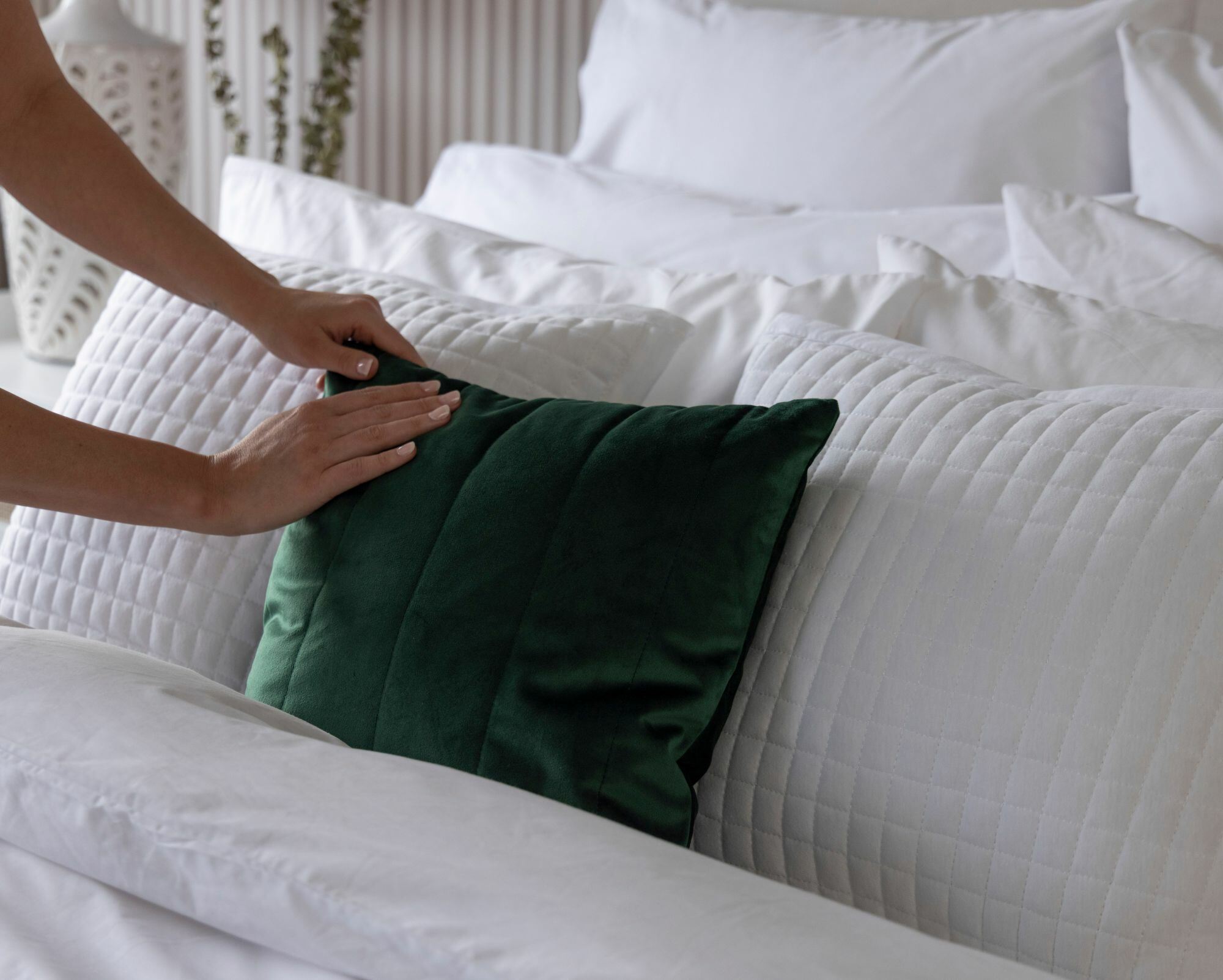
Which Materials Are Damaging Your Hair?
A handful of materials on the market can damage your hair. Avoid materials with a rough surface, low thread count, loose weave, and high absorbency.
Here's a list of pillowcase materials that could be damaging your hair:
-
Microfibre, cotton, flannel and linen: These materials' moisture-wicking properties can cause severe friction due to their rough texture.
-
Polyester: Synthetic polyester fabric is non-breathable and creates static, which leads to frizzier hair.
What Should You Consider When Choosing Pillowcases?
While opting for a satin, sateen, or silk pillowcase is a great first step towards hair health, you also need to consider your hair type and texture. Additionally, skin sensitivity, and preferences for a material's softness, breathability, and thermal regulating properties are also important factors to keep in mind.
Hair type and texture
Your hair type is a significant factor when choosing a suitable material for your pillowcase.
If you have curly, dry hair, a silk pillowcase is the best to use. Silk is the most effective at fighting off frizz (which often comes with having curls) and the least moisture-absorbent. Curly hair is usually much drier than straight hair and requires more care and moisture.
For people with straight, oilier hair, a sateen or satin pillowcase will be sufficient to maintain your hair health. This type of hair is naturally very moist, and these materials are slightly more absorbent than silk. This allows them to absorb some excess moisture on your head while providing a frictionless surface to sleep on.
Skin sensitivity
Sensitive skin may benefit from naturally hypoallergenic materials like silk or satin. While the scalp is often overlooked when you think about sensitive skin, it is actually one of the most sensitive parts of your body.
Both silk and satin repel dust mites and other allergens from irritating your scalp. This leads to less itching and helps prevent flakey, dry scalp skin. A healthy scalp is a big factor when it comes to maintaining healthy hair.
Personal preferences
Softness, breathability, and cooling effects must be considered when deciding on a pillowcase material. If you suffer from overheating at night, silk or satin would be a better option as they are naturally more breathable and thermally regulating.
Sateen, on the other hand, is excellent for people in colder climates who require extra warmth.
Other Tips For Better Hair While You Sleep
Besides investing in a new pillowcase, there are other steps you can take before, during, and after you sleep to keep your hair looking its best. These include hair-washing instructions, accessories, and maintenance.
Wear a bonnet while you sleep
Wearing a satin or mulberry silk bonnet while you sleep prevents friction, as your hair does not move around and rub against your pillow. Bonnets also significantly improve knotting, frizz, and dryness.
They are also perfect for people with curly hair, as they protect your curls while you sleep, meaning you can spend less time getting ready in the morning.
Leave-in conditioner or hair masks
Leave-in conditioners and hair masks help add more moisture to your hair. As mentioned, hydrated hair is less brittle and prone to damage and breakage caused by friction.
Wash your hair with cold water
Wash your hair with cold water to ensure less damage to your scalp. Hot water can irritate your scalp and cause dryness and itching. Washing your hair with cooler water results in shinier hair and keeps the cuticles on your scalp closed and protected, which is essential to keep your hair in tip-top condition.
Air-dry your hair
Using less heat (hairdryers, flat irons, etc.) can significantly help maintain its health. Let your hair naturally air dry after you wash it to ensure better hydration, which prevents damage like dullness, frizziness, and breakage.
FAQs
What is the best hairstyle to sleep in?
The best hairstyle to sleep in is either a loose bun at the top of your head, secured with a soft fabric scrunchie, or one or two loose braids at the bottom of your head.
Is it okay to sleep with wet hair?
Sleeping with dry hair is better for its health. However, you technically can sleep with wet hair if you follow these steps before going to bed:
-
Wash and condition your hair.
-
Use a hair mask.
-
Use a leave-in treatment or conditioner.
-
Sleep in a loose, protective hairstyle (plaits or bun).
-
Use a silk pillowcase.
What are the downsides of silk pillowcases?
Here are a few downsides to silk pillowcases:
-
If you don't purchase good-quality, real silk, it can be less durable and comfortable.
-
Poor-quality silk can contribute to uncomfortable overheating while you sleep.
-
Silk is more labour-intensive to care for than other materials, such as standard cotton or blends. It usually requires hand-washing.
Which brand sells the best silk pillowcases?
Belledorm is the best silk pillowcase brand on the market - each of their products is manufactured from Grade A, high-quality silk. Their silk is not only durable, but it also contains no impurities. And if you're looking to improve your sleep even more, Belledorm offers supreme quality bedding at a highly affordable price.
Final Thoughts
Choosing the right pillowcase can make a significant difference in maintaining healthy, luscious hair. Silk, satin, and sateen are the best materials for pillowcases, as they reduce friction, allow your hair to retain moisture, and promote general hair health.
When selecting a pillowcase, consider your hair type, skin type, and personal preferences.
Additionally, incorporate other care routines to help promote better hair health, such as wearing a bonnet, using leave-in conditioners, washing with cold water, and air-drying. By following these simple steps, you can wake up with softer, healthier hair.

